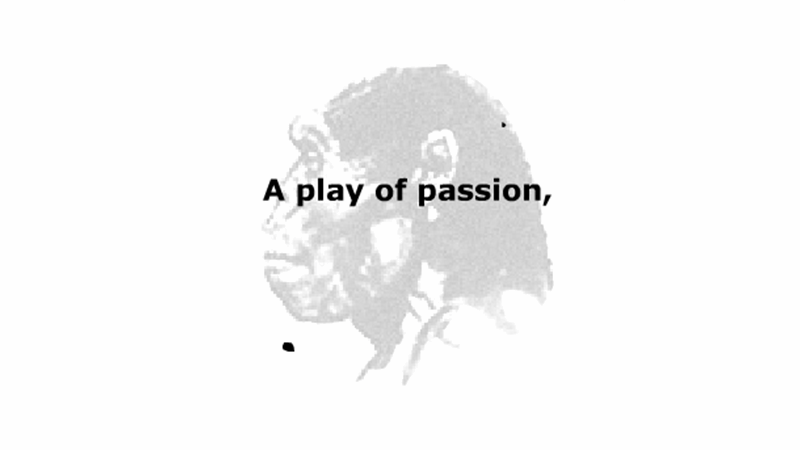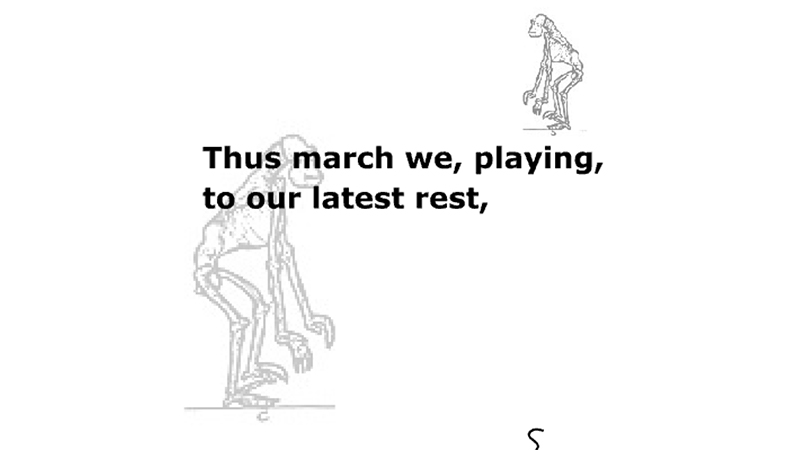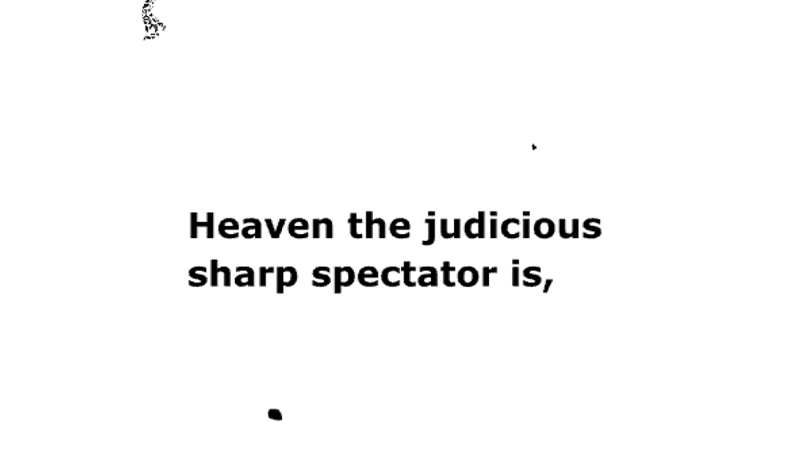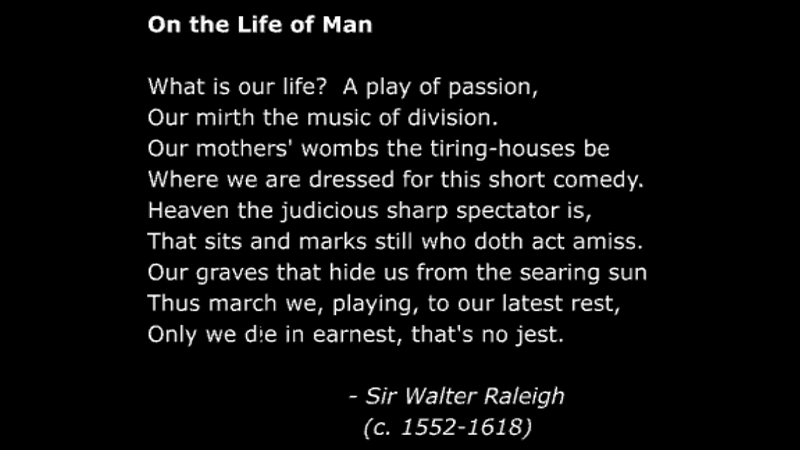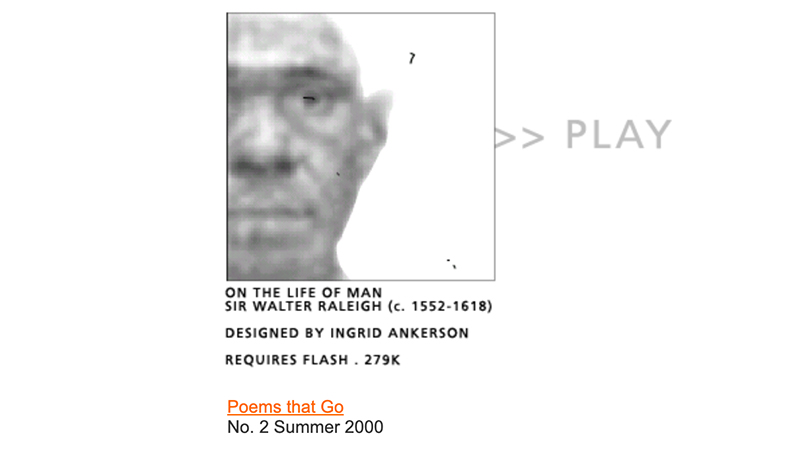"What happens when you change a poem's medium and context? Is it still the same poem? Ingrid Ankerson's re-production of Raleigh's poem [On the Life of Man] suggests that it is not. The first difference is that the 'print' version of the poem is designed to direct the reader's full attention to the written words on the page, with sounds emerging from reading the words, whether aloud or silently. That page is a kind of musical score, designed to produce a performance of musical language in the reader. Anderson's version transforms the poem into a kind of film (even recreating some of the scratch and dust marks we see projected on movie screens), reformatting and scheduling its lines with pauses different from the kind evoked by the poem. The images of different species of prehistoric man, however, transform this poem the most by recontextualizing its message. When Raleigh wrote this poem there were no theories of evolution (at least not the way we know them), no sense of a narrative that connected us to a diverse hominid fossil record. His poem may come across as a witty extended metaphor for our brief lives and beyond, as understood through the Christian beliefs of his time. To place this idea across geological time makes a bolder statement, particularly in the way we understand the speaker and Heaven. Ankerson's e-poem exemplifies the same concept Borges suggested in his short story Pierre Menard, author of Don Quijote, rethought for the digital age." -- from I Love E-Poetry
1 COPY IN THE NEXT
Published in Summer, 2000 by Poems That GO in Volume 2.
This copy was given to Megan Sapner Ankerson and Ingrid Ankerson in Spring 2019.
PUBLICATION TYPE
Journal
